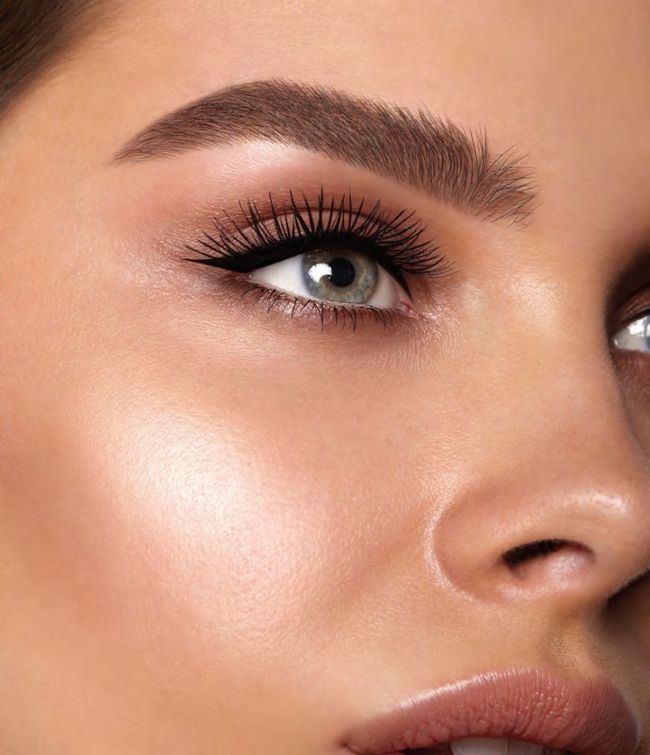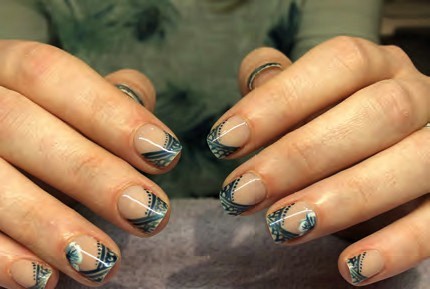Ask the EXPERTS
Our experts answer an array of questions about every aspect of running a successful salon or spa business

Aromatherapy Associates
How can I help my therapists relax into treatments more?
Most therapists come into the profession because they enjoy making people feel better, so what’s changed? Well, therapists are now required to do far more than just perform a treatment – they need to follow strict protocols and meet retail targets on a tight time schedule, which can lead to dissatisfaction with the job.
A healthy, happy team transcends into the treatment room, increasing staff retention and paying off in your figures. Here are some simple things you can do to help your team engage with the job again.
Boost your training: Ensure your team is trained in all the therapies on your menu because with knowledge comes confidence. Encourage your therapists to use cue cards to build their confidence in protocols while perfecting their performance of the treatment.
Streamline the consultation: Train your therapists in how to give a simple but effective three-step consultation. For example, for a massage treatment, the three key questions to ask would be: How do you want to feel? Do you have any areas of concern? What is your pressure preference?
Increase the turnaround time: Allow your therapists a minimum of 10 minutes after treatment to get the client off the couch comfortably and retail to them. The biggest stressor in life is time, or lack of it, so ensure your team does not have unnecessary extra pressure.
Invest in self-care: How can a therapist relax the client if they aren’t relaxed themselves? Get your therapists to perform a calming action before each treatment, such as taking three inhalations of frankincense to deepen breathing, saying a motivational affirmation or stretching to ensure they are standing with good posture.
Implement workplace wellness: Use oil burners with essential oils like West Indian bay and myrrh, encourage healthy eating with snacks such as fresh fruit, nuts and vegetable crudités to boost energy, and ensure there is always water and herbal tea.
Christina Salcedas is head of education for professional skincare brand Aromatherapy Associates.
DO YOU HAVE ANY QUESTIONS TO PUT TO OUR EXPERTS?
Send your question about absolutely anything to do with running a beauty business to editorial@professionalbeauty.co.uk

HD Brows
Which techniques are best for filling in brows with make-up?
The biggest error you can make when filling in a client’s eyebrows with make-up is applying product through the full brow and camouflaging any natural hair. The trick is to follow the natural hair growth and be realistic with the silhouette.
Your client’s brows will not be identical in shape, so you need to fill in the gaps with the illusion of hair strokes, aiming for symmetry and a finish that will match the overall effect of their make-up.
I use a pencil shaper – a product with a needle-shaped tip – to sharpen my eyebrow pencils finely so that I can create these hair strokes. Brow crèmes are also good for creating shape that will last from day to night as they apply as a cream but set like a powder, ensuring a natural finish.
For special occasions that require an ultra-realistic look, I recommend clients try brow extensions because they give a 3D appearance that’s unachievable with make-up alone.
They also last up to three days. To the naked eye, you can’t tell which hairs are real and which are extensions, and it adds a new skill to your make-up offering, which in return generates new and returning clientele.
Rebecca Cathcart is the lead make-up artist for beauty brand HD Brows. She has worked on campaigns and shoots for Dior, Fendi and Grazia Arabia
I’m a trainee tech. How can I perfect my gel-polish nail art?
Creating nail art with gel-polish doesn’t have to be complicated; simplicity is often the key for amazing results. When starting out, it’s important to get yourself equipped correctly. Invest in a couple of good brushes, such as a long striper and fine detail, and then learn how to use them well.
When it comes to learning different designs, choose one pattern to master and then take your time practising it. One of the most common issues you’ll face is that gel-polish tends to spread when applied over a tacky residue. Always wipe residue off before doing any artwork because it avoids the polish looking like a splodge.
You should also give the final design an extra cure to make sure it has dried well before you apply the top coat, which I gently dab on with a top coat brush to avoid colour dragging and a messy finish.
Once you’ve become an expert in gel-polish nail art, don’t be afraid to try different mediums such as 3D acrylic and acrylic paint. To make a difference in your nail art offer, you need to go outside your comfort zone to grow as a professional.

Julie-Anne Larivière
Julie-Anne Larivière is a nail design expert for Salon System, which distributes Gellux. She has 10 years’ industry experience.
I want to set myself up as a freelance tanning therapist. How can I get my name out there?
Preparation is key. Starting up a new venture is a very exciting time and there will be lots to think about. However, it can also happen very fast; your training will come and pass quickly so it’s important you’re prepared to hit the ground running as soon as your certificate arrives.
Once you’ve signed up to training you should take this time to prepare a business or marketing plan. Not only will this allow you to focus, it will mean you can drum up interest even before you’ve qualified. For example, if you know when your training is taking place, you can promote your new treatment as “coming soon” or “booking available from X date”, allowing you to create a buzz and build up relationships with new customers.
Social media is a great tool because it’s a way of reaching out to a wide base of potential customers with only a small budget. When starting off freelance, it’s important to spread the word. Posting an “opening soon” competition is a great way to encourage engagement, prompting customers to share their comments or tag other potential clients.
I also always encourage therapists to link up with other businesses in their area, which would complement their services, and this is suitable for both salon-based and freelance tanners.
Carry out market research to find reputable make-up artists or hairdressers where your treatments could easily link up and then get the ball rolling.
Nicola Matthews is founder of Sienna X, which offers tanning products and a salon waxing brand and training system. She started the company in 2003.
What are the golden grooming rules when waxing a guy’s eyebrows?
There can be a tendency to overwork male brows and make them too thin, feminine and arched, which is a shame as male eyebrows can be thick and still look groomed. I always say, think trim, not thin.
For most men, the aim is to keep their brows looking groomed, tidy and natural-looking. The best way to achieve this look is to work in small sections so you can keep checking the symmetry between the brows. You also need to work above as well as below the brows, but stick to taking hair from just outside the main shape. Don’t be tempted to take too much away in the centre between the brows either.
Hot wax is perfect for brow waxing as it gives a soft finish without the harsh lines that strip waxes can leave. It’s also ideal to use with other facial waxing due to its lower temperature and use with a pre-wax oil, which creates a barrier between the skin and the wax, preventing bruising and lifting.
Some men can have particularly thick or long brow hairs, so brushing them in the natural direction of hair growth and then trimming them with scissors to take away a bit of the density can also help shape the overall look.
Angie Sanderson is lead educator for waxing brand Wax:one, which is distributed by Sweet Squared, and owns salon Angelic Hair & Beauty in Glasgow.
How can I advise clients about the dangers of DIY gel-polish kits?
Home users don’t have the knowledge of nail anatomy, product chemistry and correct application that we, the professionals, do. When painting their nails with regular polish, they don’t worry about skin contact, relying on tidying up with nail polish remover afterwards.
While this isn’t ideal with normal lacquer, it is a real concern if replicating this procedure with gel-polish, as skin contact with uncured product is a known cause of skin allergies. This may not always cause an issue until removal, where the under-cured dust and filings can be the source of skin reaction.
Instructions are poor in these DIY kits, with few or no precautions or warnings about avoiding skin contact included on the packaging. Warn clients that the lamps are often poor quality and will be unlikely to give a correct cure; just because the product appears cured it is not necessarily thoroughly cured. DIY kits don’t often have material safety data sheets (MSDS) – documents that contain information on the potential hazards – either.
Explain to clients that when the user doesn’t understand the chemistry or the anatomy of the natural nail, they can’t prep or remove without damage. How would they understand the curing times and specifications of UV versus LED lamps? What would they do if they spilled the product? Would they know how to safely dispose of it? It’s always better to see a professional.
Many home users and even some so-called professionals are turning to third-party online retailers to purchase what they assume is a genuine but cheaper product.
Reputable brands will not list their products on third-party sites and there is no guarantee that what is being purchased will meet expectations or standards.
Katie Barnes is owner of Katie Barnes Training Academy in Warwickshire and won the Professional Beauty Nail Professional of the Year 2018 award.
Which ingredients are best to treat brown spots?
Even skin tone is one of the most common goals for my clients, especially in the summer when they have spent time in the sun.
When treating a client, remember that sometimes an uneven complexion has nothing to do with their skin health – the over-production of pigment is to blame, and this can be extremely frustrating for clients.
Advise them to invest in products that contain natural skin brighteners such as liquorice, daisy flower and mulberry extract, as well acids such as azeliac, kojic, lactic and glycolic that aid with cell regeneration and correction of uneven skin tone. Along with the daily application of brightening agents, a full-spectrum sun protection must be worn every day to prevent stimulation of pigment.
Uneven skin will meet its match with results-driven treatments that use powerful AHA and BHA blends. A mixture of advanced exfoliators and revitalising ingredients will rejuvenate and repair pigmentation.
However, prevention is always better than the cure. Recommend that your clients wear a large hat and stay out of direct sunlight, and apply at least an SPF 30 with a physical protection every day as this will reflect UV rays away.
Charlene Stoker is head of UK education for Image Skincare and has been in the industry for 12 years. Stoker used to suffer with acne and this is what drives her to give clients the best advice for their skin.